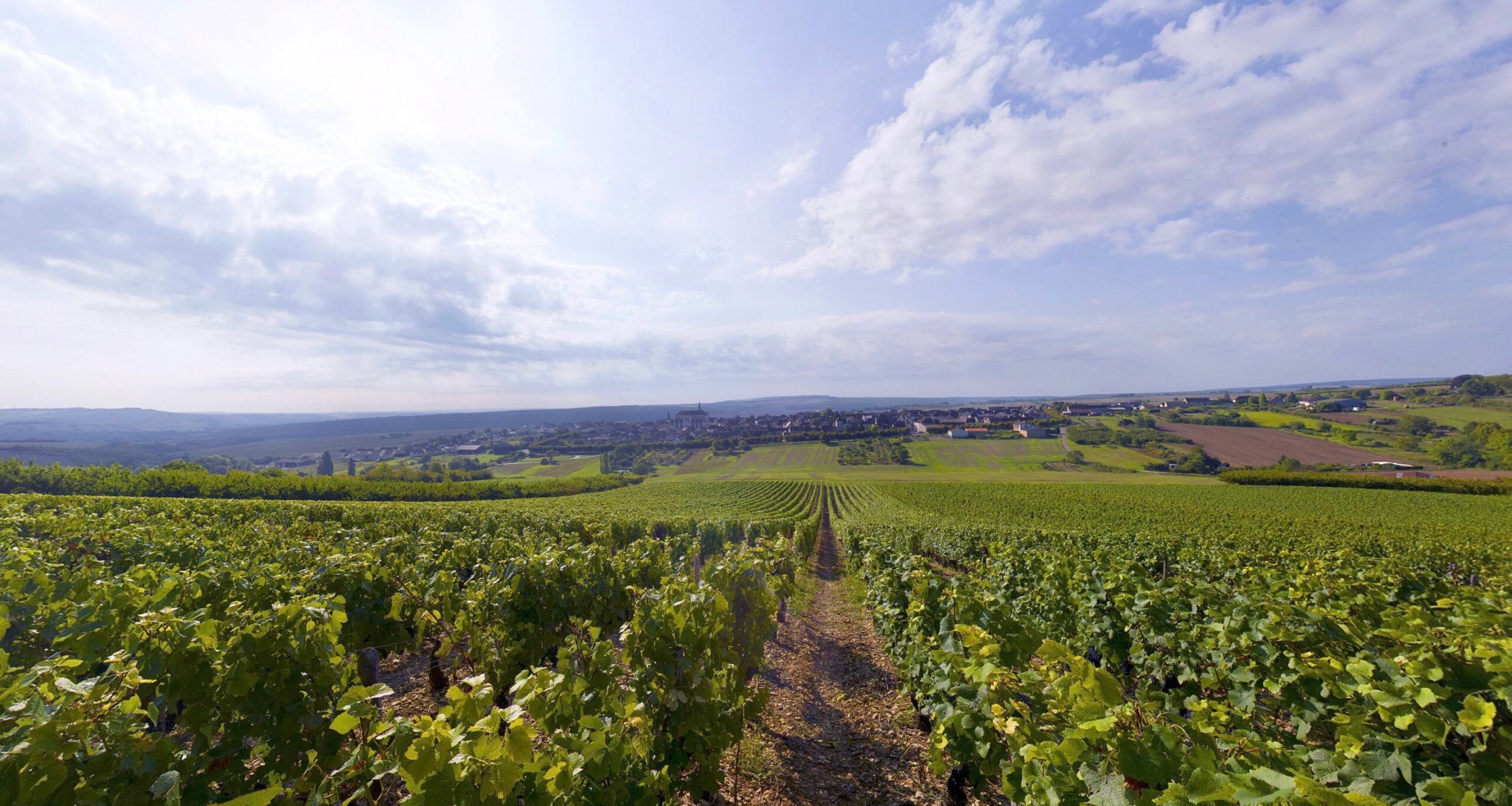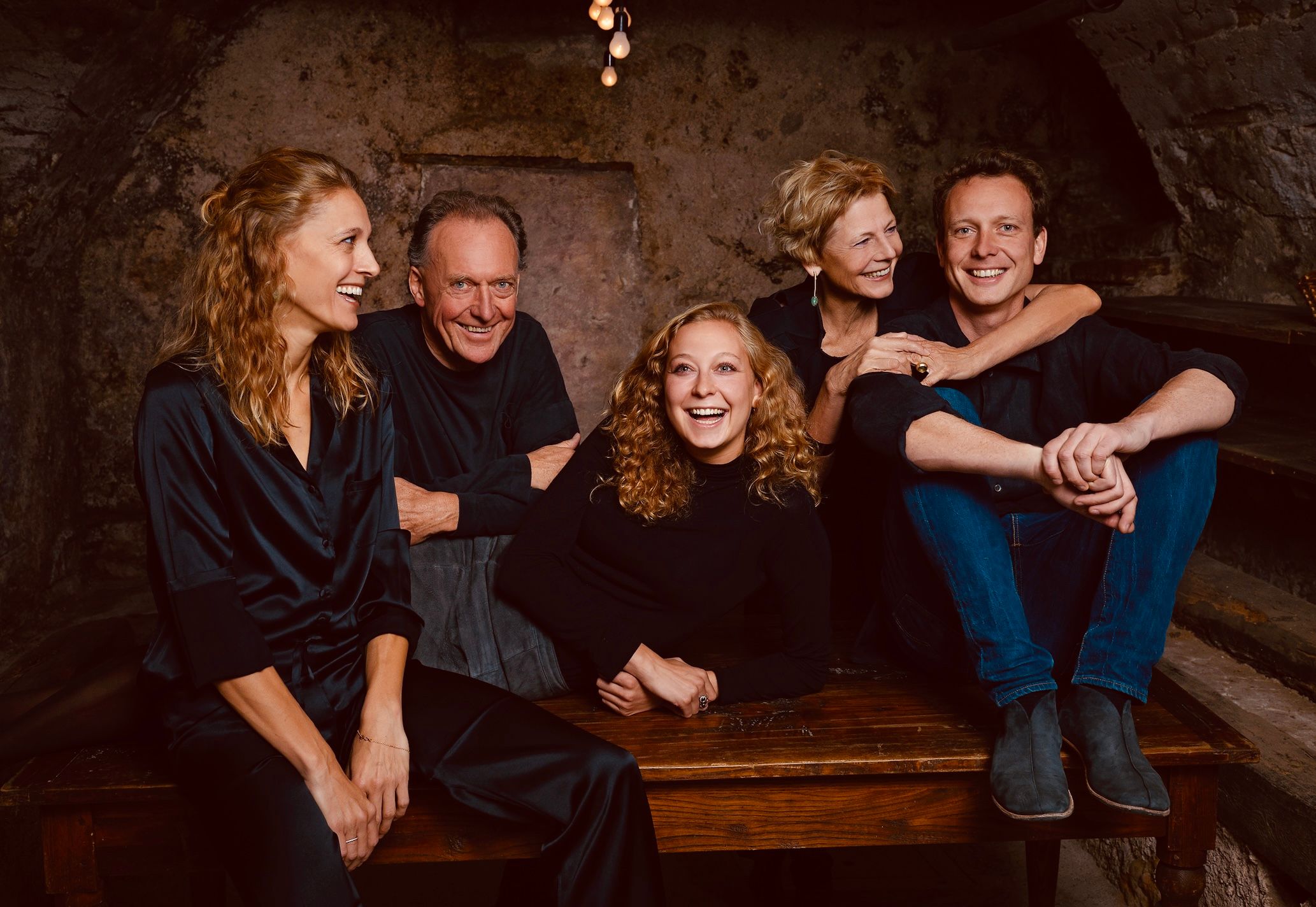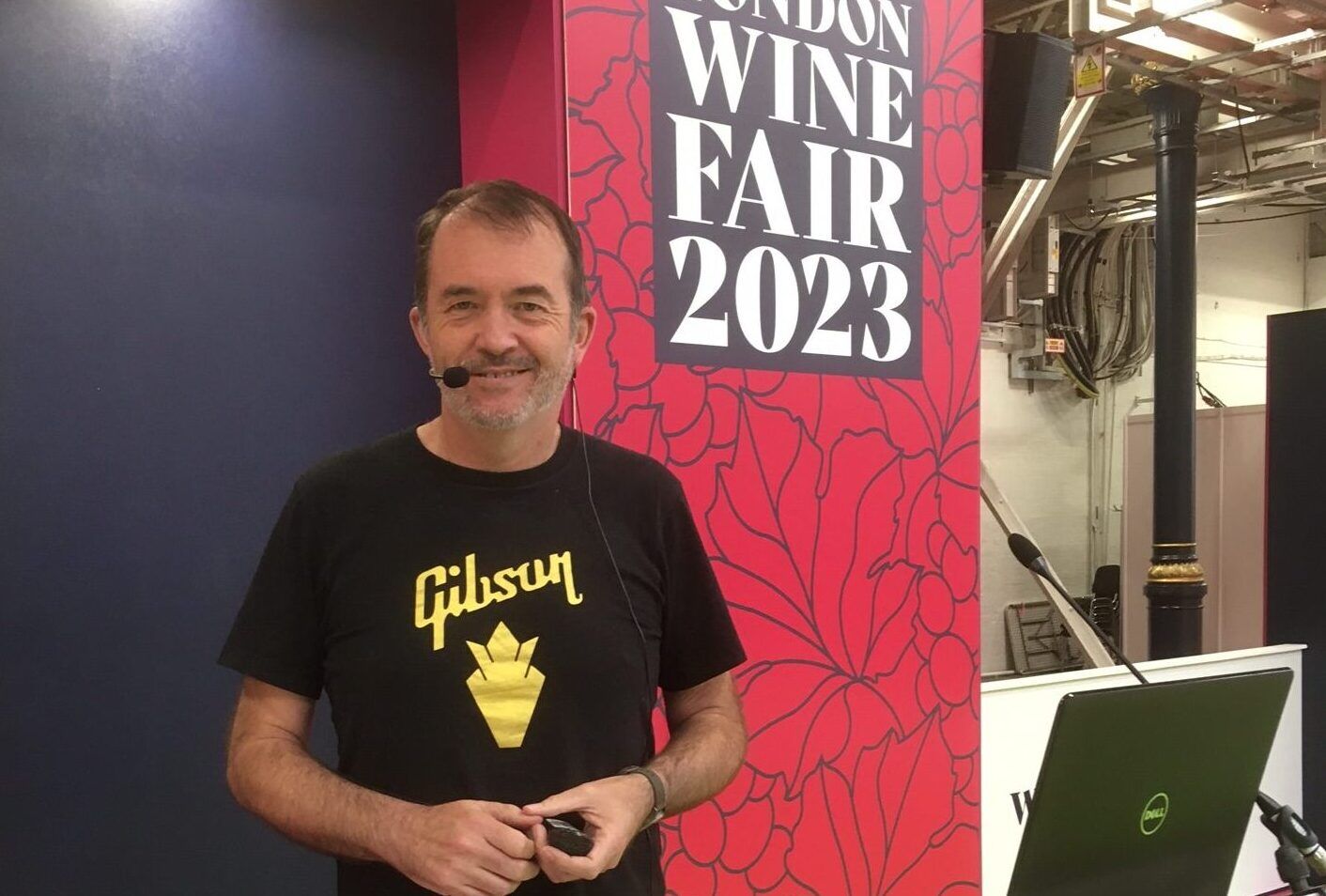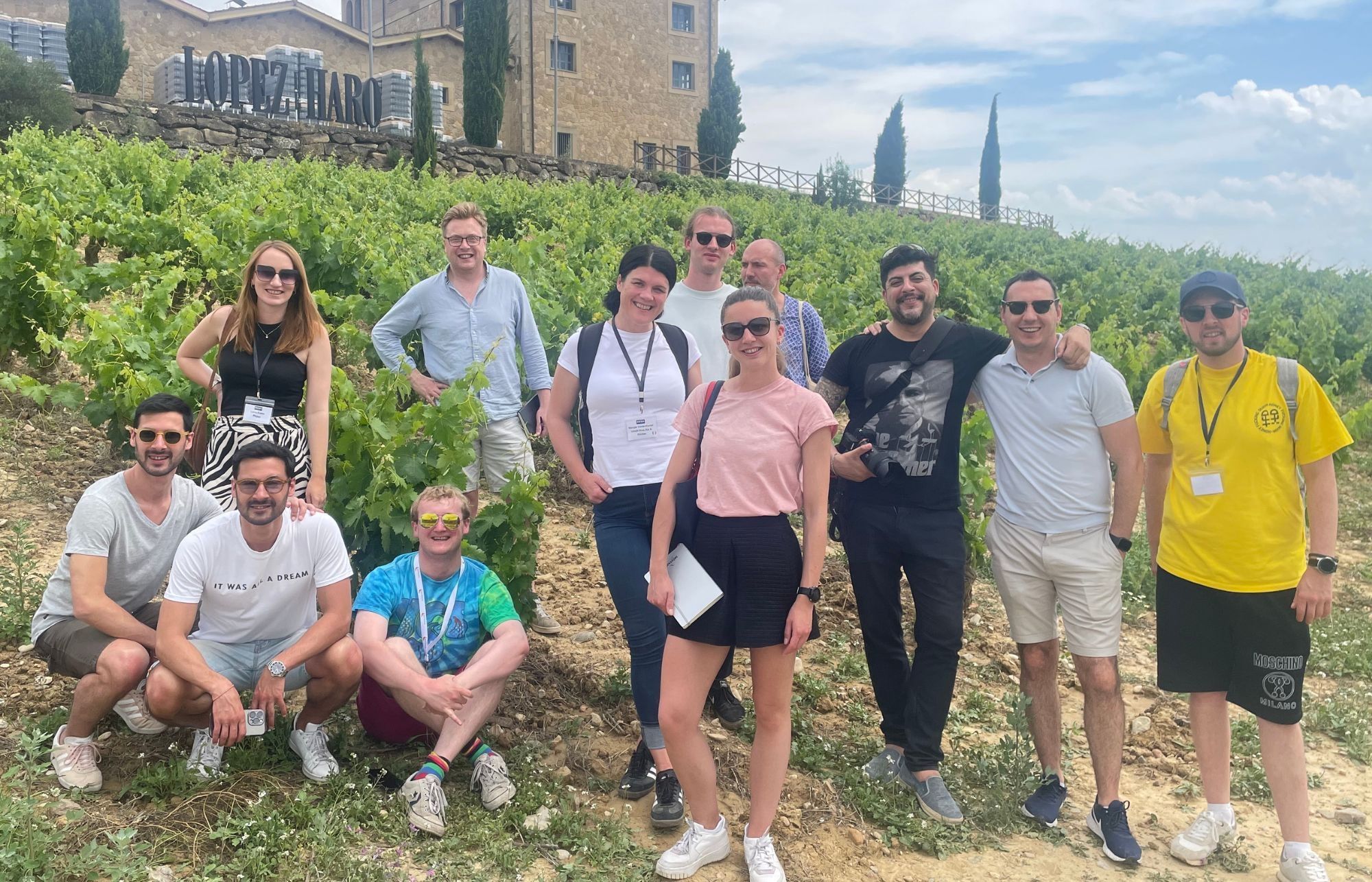Magali Bernard sees herself as being like a chef in how she brings together her quality wines at Domaine du Clos du Roi in the AOC of Bourgogne Coulanges-la-Vineuse in the heart of the Grand Auxerrois.
Drive two hours south of Paris and you will find yourself in the Bourgogne Coulanges-la-Vineuse one of the Hidden Gem AOCs of the region that sits in the heart of the Grand Auxerrois. The Bourgogne Coulanges-la-Vineuse sits on the summit of a little rounded hill on the East-facing side of a bowl-shaped depression overlooking the left bank of the river.
When wine writer L.M. Archer visited the area for The Buyer in 2021 she described Bourgogne Coulanges-la-Vineuse as offering “astonishing affordability and quality, befitting their potential village-level status”.
Bourgogne Coulanges-la-Vineuse and its associated villages (Charentenay, Escolive-Sainte-Camille, Val-de-Mercy, Jussy, Migé, and Mouffy) were given AOC status within the general appellation Bourgogne Coulanges-la-Vineuse (red, white, rosé) in 1993.

The vineyards of Bourgogne Coulanges-la-Vineuse form part of the outer fringes of the Paris basin and overlie limestones of the Upper Jurassic (Portlandian, Kimmeridgian) or in places chalks of the Lower Cretaceous. The excavation of a Gallo-Roman site at Escolives-Sainte- Camille revealed evidence of the presence of vineyards dating back 20 centuries.
Lighter Pinot Noirs
It has become recognised for producing lighter styles of Pinot Noir, that makes up the majority of the 99 hectares of red grapes grown in the AOC,that can be enjoyed young, and within the first three to four years of bottling. Although aged Pinot Noirs from the area also do very well. The local cherry trees help bring notes of cherry to the nose as well as strawberry and blackcurrant. The Bourgogne Coulanges-la-Vineuse is known for its well-balanced, full mouth feel Pinot Noirs that offer length without excess tannins. Its Pinot Noir is also increasingly being used to make rosé with great potential.
The Bourgogne Coulanges-la-Vineuse also has 20 hectares of white wine grapes, mostly made up of Chardonnay that can be recognised by their pale gold colour, floral and mineral scents, and by their freshness and sprightliness on the palate.
Domaine du Clos du Roi
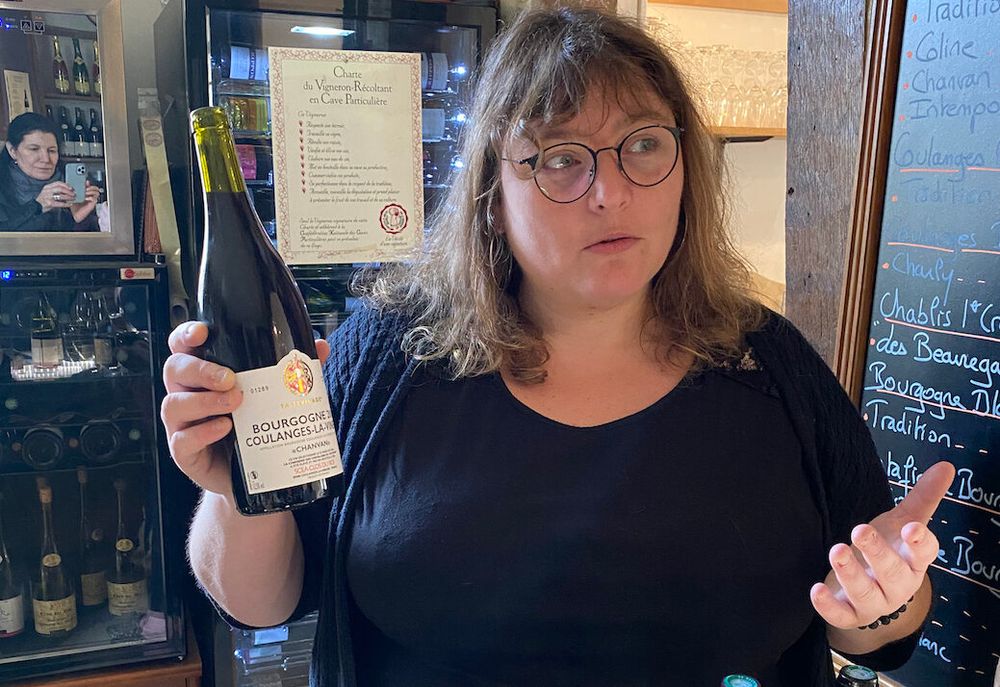
Magali Bernard of Domaine du Clos du Roi in Bourgogne’s Coulanges-la-Vineuse likens herself to a cook working with her ingredients from the vineyards. Photo © LM Archer
Domaine du Clos du Roi in Bourgogne Coulanges-la-Vineuse is a small family-run estate nestled in the picturesque heart of the Grand Auxerrois in Bourgogne. It sits just two kilometres from the Gallo-Roman excavated site and is named after the village’s second-century Roman ‘royal’ owner.
Now run by Magali Bernard, it is the fruit of her family’s work for three generations. Originally her grandfather’s farm held mainly livestock and cherry trees with only a few spare vines on the property, but Bernard’s parents, Michel and Denise decided to focus on making wine.
“Cherry trees like the same places as vines,” explains Bernard so 20 hectares of trees were replaced with vines. “They wanted to get rid of the last hectare of cherry trees too, but I insisted we keep them for making our traditional marmalade and cherry vinegar.”
The winemaker since 2001, Bernard describes herself as “a cook.” “I have some fruit, and I make wine with it. Two things are most important, the fruit and the time. I have the terroir and the vines, I make sure my fruit has good ripeness, I protect my vines and I choose my time well. We ferment in very old stone vats from the 17th Century and use natural yeasts.”
One thing she is adamant about is wine should not be rushed. “Too often wine is made too quickly and not appreciated as it should be,” she says.
Since the 1970s Domaine du Clos du Roi’s wines have benefitted from a systematic ageing process in oak barrels of around one to two years old. “I don’t want too much of the wood aroma, this is all to do with time in the cellar and what the use of oak allows. We create light and supple Pinot Noirs with discreet tannins, so we don’t want a lot of tannin in the wood, we want to retain our fruit”.
Hail César
Over the years Domaine du Clos du Roi has developed a range of red, white and rosé Bourgogne Coulanges-la-Vineuse wines largely based on Pinot Noir and Chardonnay, though it is clear Bernard is intrigued and excited by César, a speciality of the region often used to add structure to a wine.
“We have a new wine which is 85% César. It is too much for it to be classified as AOC but it is interesting. People think it will be a strong wine, but there is lots of fruit and nice tannins”.
César was established by the Romans in their vineyard in the 2nd Century and so even through this loses the AOC “it is not a problem for me,” shrugs Bernard, “because the César is so good”.
Vintage changes
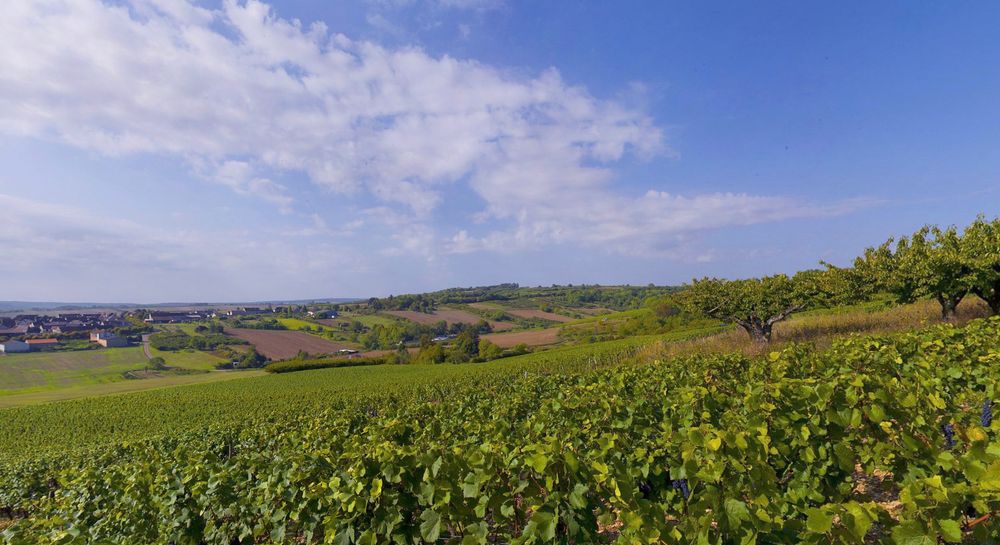
Bourgogne Coulanges-la-Vineuse offers excellent quality wine at all price points, says Magali Bernard of Domaine du Clos du Roi.
The terroir and knowledge in the Bourgogne Coulanges-la-Vineuse is so good says Bernard, that it means “we will always have excellent quality wines, even at €10, or less, you can find good wine to drink now”.
However, things have not all been smooth sailing for the area. “My problems are not the same as my parents’ problems,” says Bernard. “Before there were maybe three difficult vintages, but in the last 10 years we have had only two years without problems”.
Bernard cites frosts and the dry, hot summers as the key problems she faces, with the lack of rain taking a toll on the wines’ freshness and acidity. It means she often picks earlier, harvesting the grapes for her red wines right after the harvest for her Crémant de Bourgogne.
“We harvest for around three weeks,” says Bernard. “All the wines from the first week are the best. It is better to take bunches as soon as possible to keep the freshness and the red fruit flavours”.
Domaine du Clos du Roi is not certified organic, despite following organic principles. “We don’t know what will happen in the future, or what I will need to do to keep the quality and quantity of my wines. I prefer to say we are organic 95% of the time, but sometimes I may need the flexibility of 5%. That’s my job”.
Both 2019 and 2020 were small harvests so “everyone was hoping for a big quantity in 2021, but that did not happen,” she says. “It was the worst. With 2021, we have made wines similar to 2019, wines which will be good as an aperitif or with fish, wines to be drunk now. I am happy with the vintage. It is elegant and fresh, just smaller”.
Focus on tourism
Bernard has come up with a different strategy to sell her wines and promote the estate. “My parents had some big customers in the 1980s and then they lost them, I was only a little girl, but I understood that was a problem, so I developed a new plan”.
She decided to focus more on wine tourism: “It is better to have many small customers than be dependent on a couple of big ones. I like to be with people and explain our history and our wines, so I arrange concerts, or tours of the house as well as tastings and vineyard tours. This part of Bourgogne is so beautiful and there is so much to discover with its many estates and wines and vines and cherry tree orchards and forests. It is a beautiful place to visit for any wine lover”.
There has been a bar and restaurant at Domaine du Clos du Roi since 2016 but “people were saying how lovely it was, they want to relax but where can they sleep?”. So now Bernard is building a guest house with a few bedrooms for overnight stays.
Domaine Clos du Roi does not currently export its wines, but Bernard was able to bring three of her wines to the Great Bourgogne Revival tasting held at the London Wine Fair in June, including her Cuvée Chanvan 2018, 100% Pinot Noir aged in oak barrels for 24 months which is “typically Bourgogne” with its fresh, fruity elegance and complexity. She also showed her Cuvée Coline 2019, named after her daughter, which is a blend of Pinot Noir and César, horse ploughed and foot crushed before aeging in oak for 12 months.
“We do not have the volume for a big market, but we would love to be in restaurants with a great wine list and some independent wine shops,” she says.
- You can find our more about Bourgogne Coulanges-la-Vineuse at Bourgogne Wines website here.
- You can find out more about Domaine du Clos du Roi at its website here.
- You can read L.M. Archer’s review of Domaine Clos du Roi on The Buyer here.
